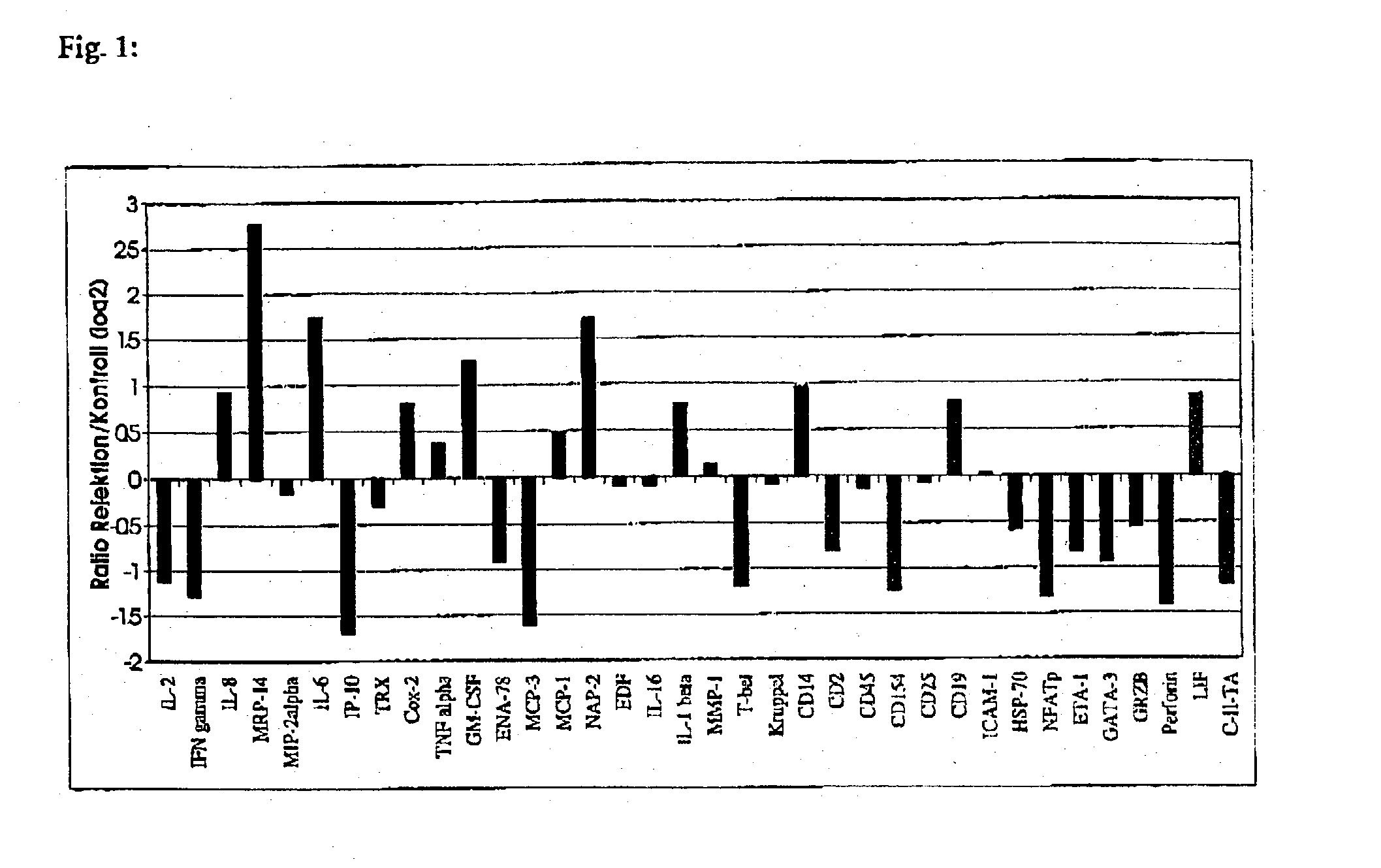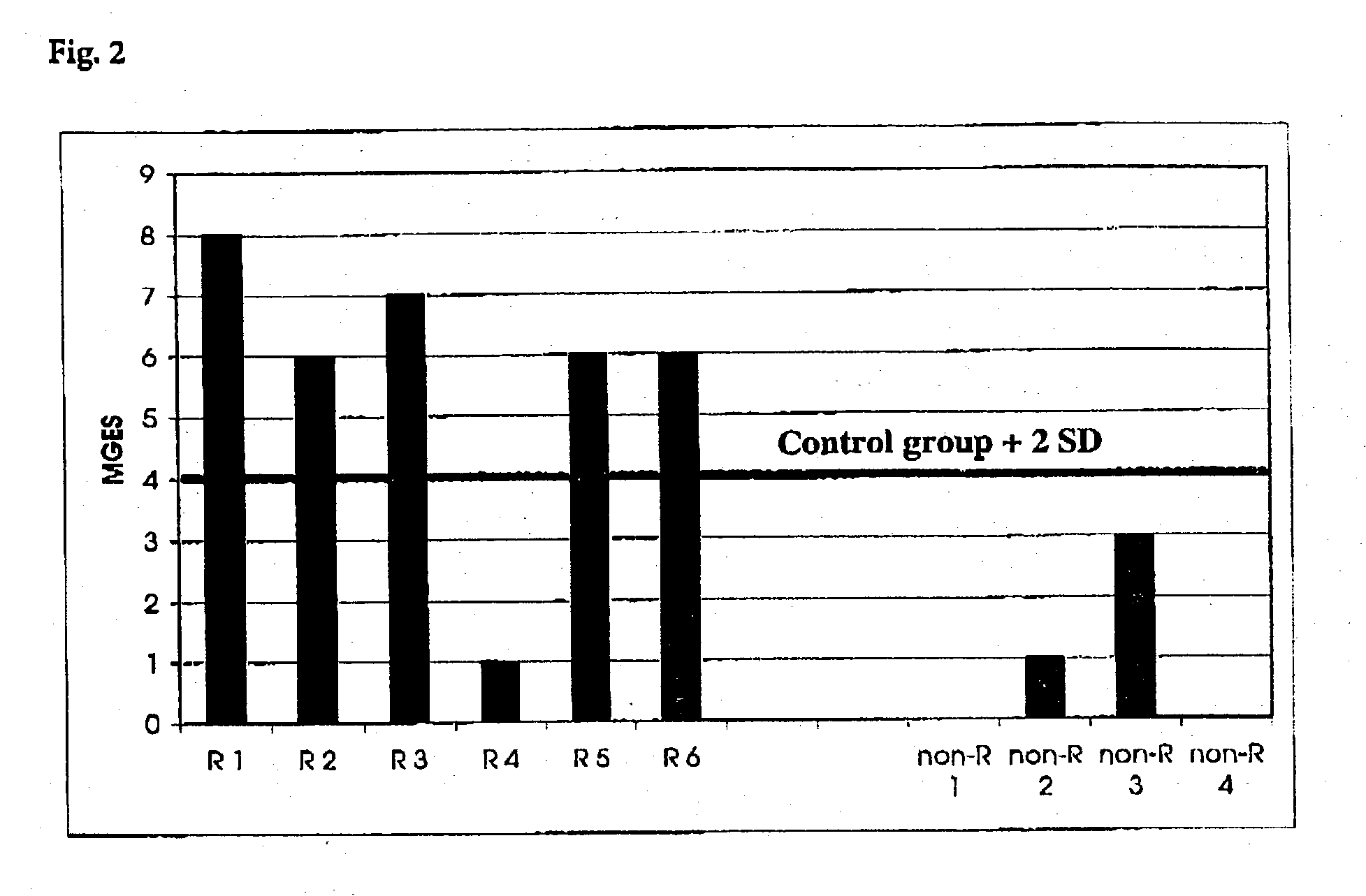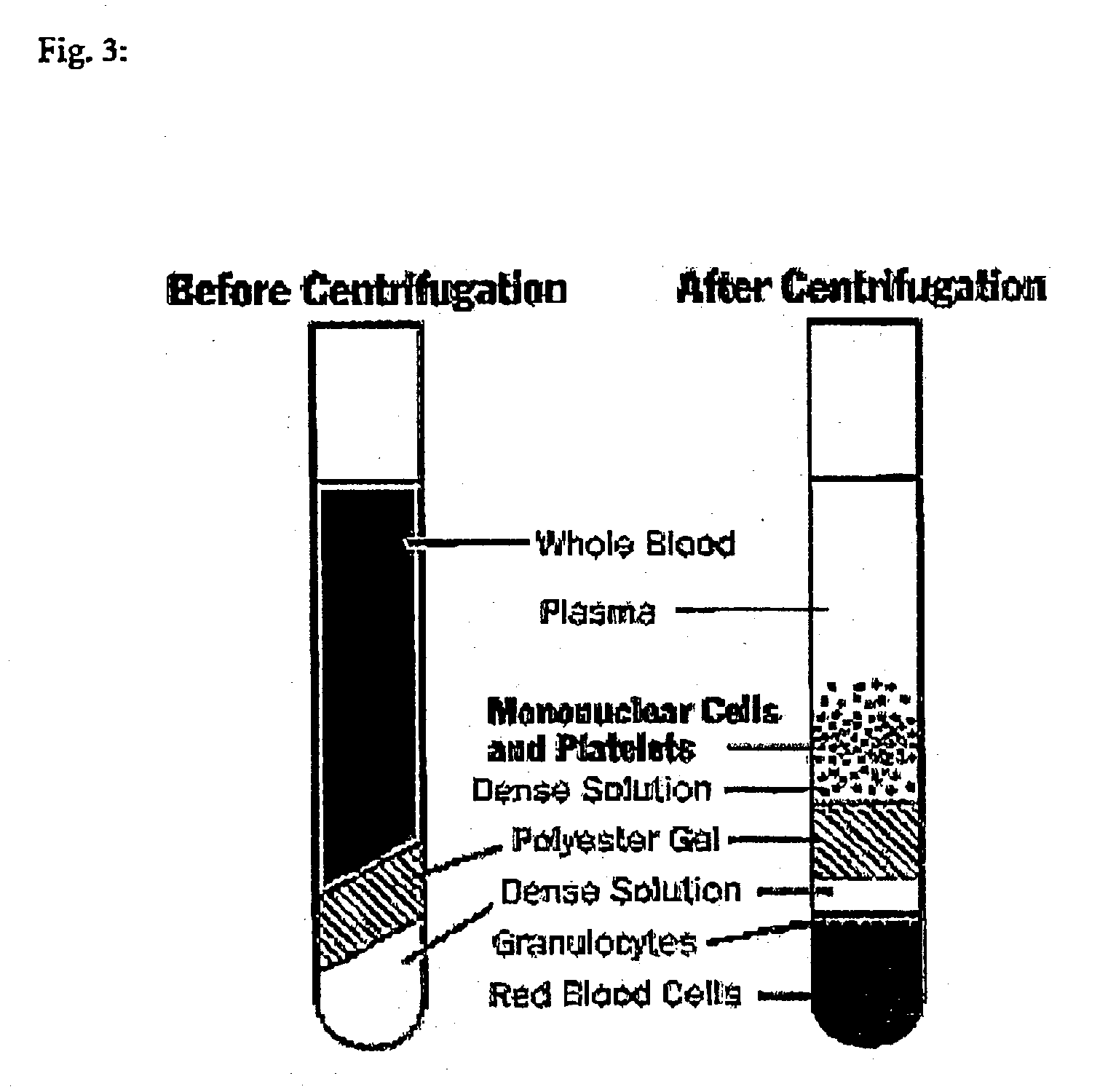Method for detection of inflammatory processes
a technology for inflammatory processes and dna, which is applied in the field of inflammatory process detection, can solve the problems of requiring considerable time and effort, affecting the clinical outcome, and a certain risk of discomfort on the patien
- Summary
- Abstract
- Description
- Claims
- Application Information
AI Technical Summary
Benefits of technology
Problems solved by technology
Method used
Image
Examples
example 1
Automated Sample Preparation and Reverse Transcription
[0072] Peripheral blood was collected into CPT-Vacutainer (Becton Dickinson). Centrifugation of the CPT tube resulted in dividing the contents into four distinct layers (FIG. 3):
[0073] Packed red cells, granulocytes and "Dense Solution" at the bottom of the tube
[0074] Inert plug separating RBC's from Peripheral Blood mononuclear Cells (PBMC)
[0075] Ficol ("Dense Solution") layer containing PBMC's
[0076] Plasma
[0077] The PBMC layer was carefully transfered to a 15 ml falcon tube and washed three times with cell culture medium. 2 * 106 PBMC were cultured in 1 ml RPMT 1640 with 10% FCS for 3 hr at 37.degree. C. to regain basic transcription levels. After lysis in 300 .mu.l MagNAPure lysis puffer the sample were frozen at -70.degree. C. After thawing the lysates were well mixed and transferred into the MagnaPure samples cartridge and mRNA was isolated with the MagnaPure-LC device using the mRNA standard protocol for cells. The elution ...
example 2
Manual sample preparation and reverse transcription
[0078] Mononuclear cells (MNC) were isolated on a Histopaque 1077 density gradient using Leuco Sep tubes (Greiner Labortechnik Frickenhausen, Germany) and 2.times.10.sup.6 cells were resuspended in RPMI 1640 with 10% FCS. Cultures were stimulated with 10 ng / ml PMA and 0.5 .mu.g / ml Ionomycin for various time points at 37.degree. C. in 7% CO.sub.2. Cells were harvested, resuspended in 200 .mu.l PBS and 400 .mu.l of High-Pure lysis solution was added. Resulting lysates were stored at -70.degree. C. After thawing at 37.degree. C. for 10 min, RNA was extracted (RNA isolation kit) and eluted from the spin column in a volume of 50 .mu.l. An aliquot of 8.2 .mu.l RNA was reverse transcribed using AMV-RT and oligo-(dT) as primer (cDNA synthesis kit).
example 3
Quantitative Real Time Hot Start PCR Using the SybrGreen Detection Modus
[0079] Target sequences were amplified using commercially available LightCycler Primer Sets (Search-LC, Heidelberg) with the LightCycler FastStart DNA Sybr Green I Kit (Roche Diagnostics) according to the manufactures protocol. Briefly, a reaction mix of 2 .mu.l FastStart DNA SybrGreen I mastermix, 2 .mu.l of the Primer set and 6 .mu.l of PCR grade water were premixed and added to a LightCycler capillary together with 10 .mu.l of the diluted cDNA sample. After brief centrifugation, the capillaries were placed into the thermal chamber of the LightCycler and the polymerase was activated for 10 minutes at 95.degree. C. Denaturation was set to 95.degree. C. for 10 seconds. Annealing was performed with touchdown technique: starting temperature 68.degree. C.; decrease of 0.5.degree. C. per cycle over 20 cycles for 10 seconds and elongation occurred at 72.degree. C. for 16 seconds. PCR was performed for 35 cycles.
[0080...
PUM
| Property | Measurement | Unit |
|---|---|---|
| Fraction | aaaaa | aaaaa |
| Level | aaaaa | aaaaa |
Abstract
Description
Claims
Application Information
 Login to View More
Login to View More - R&D
- Intellectual Property
- Life Sciences
- Materials
- Tech Scout
- Unparalleled Data Quality
- Higher Quality Content
- 60% Fewer Hallucinations
Browse by: Latest US Patents, China's latest patents, Technical Efficacy Thesaurus, Application Domain, Technology Topic, Popular Technical Reports.
© 2025 PatSnap. All rights reserved.Legal|Privacy policy|Modern Slavery Act Transparency Statement|Sitemap|About US| Contact US: help@patsnap.com



